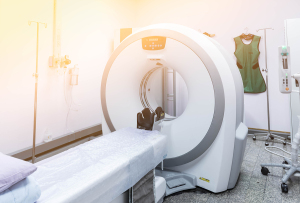From the April 2019 issue of HealthCare Business News magazine
By Dr. Ryan K. Lee and Joanne Hoener
Each year, between 36,000 to 324,000 patients in the United States experience extravasations of contrast media when undergoing an IV contrast-enhanced (CE) CT exam. Extravasations are defined as accidental extravascular injection of intravascular contrast media caused by dislodgement of the cannula, contrast leakage from the vessel puncture site, or rupture of the vessel wall, and can range from mild impacts requiring no specific intervention to severe impacts requiring a patient to have a surgical procedure to address the extravasation.
These statistics have led Radiology professionals to establish a set of best practices and standards to help address this mostly preventable patient safety risk during CT procedures. This article summarizes established best practices and also describes some techniques to minimize contrast extravasation.



Ad Statistics
Times Displayed: 656
Times Visited: 5 Fast-moving cardiac structures have a big impact on imaging. Fujifilm’s SCENARIA View premium performance CT brings solutions to address motion in Coronary CTA while delivering unique dose saving and workflow increasing benefits.
Extravasation of iodinated contrast media can result in injury to surrounding tissues. One of the most feared complications is compartment syndrome, which can be a surgical emergency. Compartment syndrome is caused by increased intracompartmental pressure that compromises tissue perfusion and can cause nerve damage. Extravasations produce a number of challenges including patient complications, patient inconvenience, disruption of workflow, and cost implications related to medical and/or surgical intervention required in severe cases.
In addition to the established methods, which are well described in the literature, more recently, a technique to reduce contrast extravasation has been elucidated. Researchers in the Department of Radiology at the Einstein Healthcare Network led by Dr. Ryan Lee recently conducted a study that lead to a reduction in CT IV contrast extravasation rates. These best practices were recently the subject of a webinar presented by the American Healthcare Radiology Administrators which focused on measures that can reduce the number of contrast extravasations with CE CT exams.
One important observation from the Einstein team was that patients rarely experienced an extravasation with their Cardiac CTA exams. This was interesting because these exams typically use higher flow rates and pressure settings compared to routine CE CT exams. Review of the protocols revealed a key difference with cardiac CE CTA exams compared to non-cardiac exams – cardiac CTA utilized power injection of the pre-injection saline test bolus, whereas all other CE CT studies used manual hand injection. One hypothesis was that utilizing a power injected saline bolus at the same flow rate as the diagnostic injection may better identify IV lines not viable for a contrast injection, compared to hand injection of saline to evaluate the IV.

